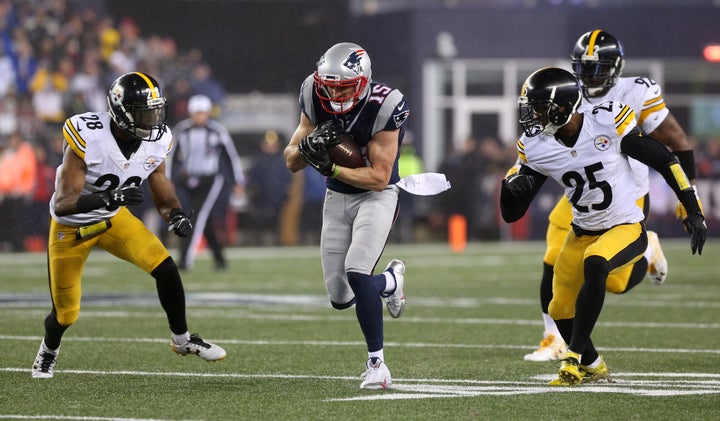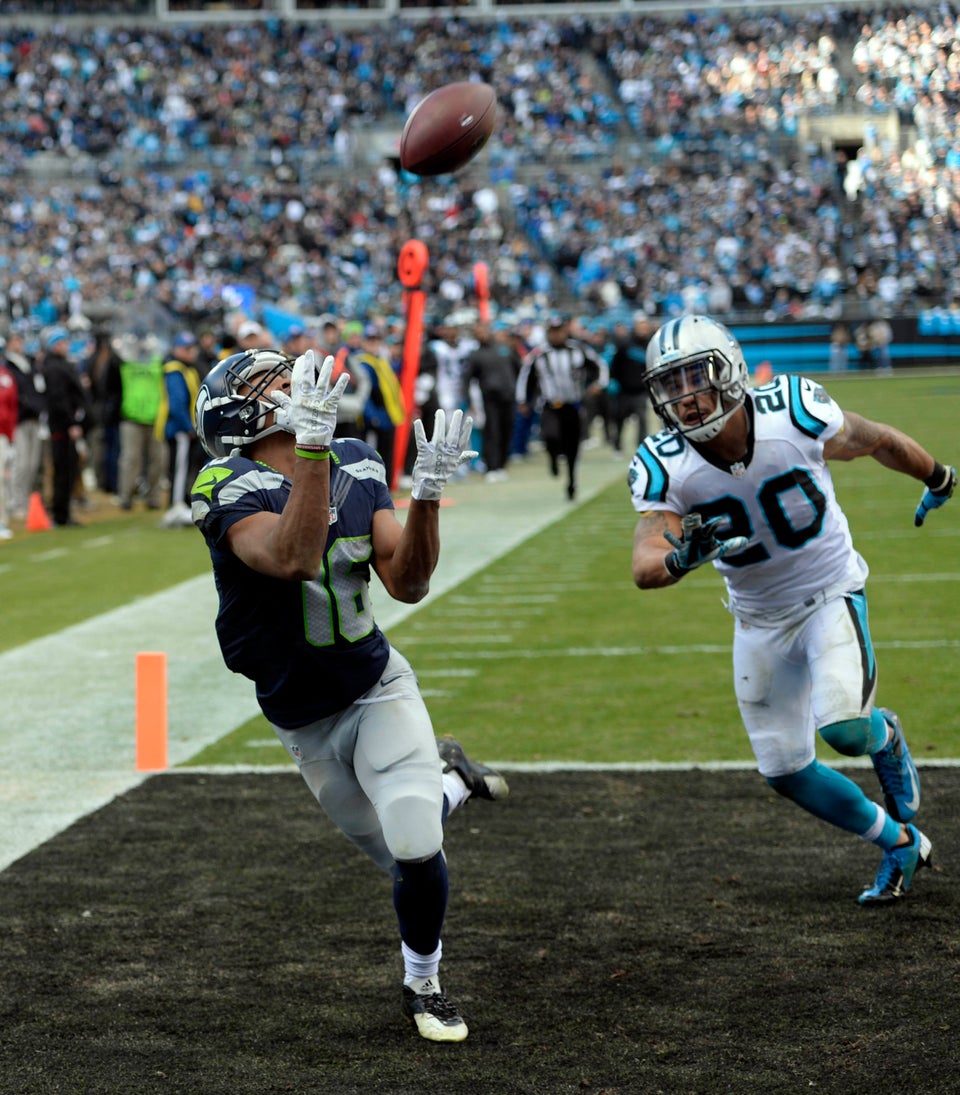
Dr. Geoffrey Manley, a California neurosurgeon, is no football fan. He isn’t planning to attend a Super Bowl party this Sunday, and he doubts he’ll even turn on the TV at home as he works on other projects.
But for the past four years, Manley been intimately involved in trying to prevent one of the NFL’s most dire problems: permanent brain damage as a result of untreated concussions.
In addition to his job as chief of neurosurgery at Zuckerberg San Francisco General Hospital and vice chairman of neurological surgery at the University of California, San Francisco, Manley also moonlights as an unaffiliated neurotrauma consultant, or UNC, for the Oakland Raiders. That means he has a sideline view of every home game, and is part of a medical team that evaluates players who have taken hard hits and could be at risk for concussion.
The NFL established the UNC program four years ago, as part of the league’s multi-pronged effort to prevent concussions from happening in the first place, and to prevent athletes from playing through a traumatic brain injury. Continuing to play with a concussion can make the injury worse and prolong recovery time. In advocating for the UNCs ― independent experts who are not part of the team or the team’s medical staff ― the NFL players’ union hoped that objective parties could help relieve the competitive pressure athletes and coaches often feel to play through the pain.
The stakes for the players are high, both during their careers and afterward. In a small but illuminating MRI study of 40 retired NFL players, researchers found that 43 percent of them showed signs of brain injury. The longer athletes had played for the league, the more damage they showed. These injured players had a mix of cognitive problems and struggled with learning, memory, attention, concentration and spatial and perceptual function.
The UNC program is by no means perfect, and as with any policy, it all comes down to how well teams implement it. In 2015, one of the independent neurologists resigned after abruptly reversing a decision he’d made about a Washington player’s ability to return to the field. The NFL is also investigating whether the Miami Dolphins and medical experts followed the proper concussion protocols after player Matt Moore sustained a major hit yet returned to the game after missing just a single play last January. Other controversial calls included Carolina Panther Cam Newton’s return to the game last September without a concussion evaluation, even though he was slow to stand up after a hit.
Football, like other contact sports, is inherently dangerous, and preventing athletes from playing while concussed is just a small part of the league’s efforts to protect against future brain damage. But league-wide concussion statistics suggest the program is working as intended. During the 2015 season, the NFL saw diagnosed concussions rise by 58 percent ― the highest number in four years. Although this statistic is alarming, it could be a sign that more players and coaches are coming forward about symptoms, and that medical experts are becoming more vigilant about injuries.
Overall, Manley’s experience has been positive. He views this program as a state-of-the-art response to head injuries, and considers himself lucky to be able to observe and care for traumatic brain injury in real time.
His main concern? The rest of America isn’t getting this kind of care.
“It is shocking how little follow-up and care people are getting after their non-sport, civilian-related traumatic brain injury, like falling off a bicycle,” Manley said. “Traumatic brain injury out in the community is a major public health issue, and I think the community would do well to adopt some of the things the NFL is doing now.”
While Manley has committed to at least one more season as a UNC for the Raiders, he hopes to take what he’s seen and try to help hospitals across the country implement similar standards of care for traumatic brain injury.
Concussions take a major toll on American health
Traumatic brain injuries can have extremely serious consequences. A 2003 analysis found that among some 290,000 people hospitalized for a TBI, 43 percent had a TBI-related disability one year later. TBI is also a factor in 30 percent of all injury-related deaths in the U.S.
The average American, however, is by no means assured of proper care for a head injury. The most common causes of TBI among the general public include falls, blunt trauma and car collisions. Approximately 2.2 million visits to the emergency room and 280,000 hospitalizations a year end in a diagnosis of traumatic brain injury, which the U.S. Centers for Disease Control and Prevention define as a “bump, blow or jolt to the head or a penetrating head injury” that results in a loss of normal brain function.
But research shows that getting a concussion properly diagnosed can be hit-or-miss. A 2008 study of the emergency departments in a Level I trauma center and an academic hospital showed that 56 percent of patients who showed signs of a mild TBI did not end up with a TBI diagnosis, according to hospital medical records. Misdiagnosis can interfere with concussion management and rehabilitation.
TBIs can range from mild (concussions) to severe (memory loss or unconsciousness), and they are linked to an increased risk of degenerative brain diseases like Parkinson’s disease, Alzheimer’s disease and chronic traumatic encephalopathy, which has been diagnosed in the brains of dozens of former professional football players after death. CTE was also at the heart of a lawsuit filed by more than 5,000 former NFL players who alleged that the league hid knowledge of the link between concussion, brain damage and suicide. The suit was settled in December, awarding players or their families up to $5 million each depending on the severity of their injuries.
How the NFL spots possible concussions on the field
If athletic spotters up in the booth see signs that a player may be concussed (balance problems, disorientation, clutching the head or loss of consciousness), they can radio down to UNCs like Manley and call for a medical timeout, so the player can go through a neurological examination.
UNCs screen athletes for confusion and disorientation on the sidelines, asking them questions about, for example, today’s date or the current U.S. president. Depending on this sideline examination, the UNC may choose to bring the athlete back to the locker room for more a comprehensive examination. If a player shows signs of a concussion, he doesn’t return to the game; instead, he’s observed daily over the next few days or weeks to make sure he returns to his normal cognitive health. Both the team doctor and the UNC have to sign off before the athlete can return to the field. To give the protocols even more teeth, as of 2016, teams can now be fined or lose draft picks for failing to remove injured athletes from the field.
By contrast, there is no typical experience for the average American who falls and hits their head, or takes a spill during a pickup basketball game. A 2016 survey of emergency departments in New England found that 35 percent of them didn’t have guidelines for concussion management and 57 percent said their guidelines were used inconsistently. Doctors who did give patients written follow-up instructions (94 percent) recommended inconsistent schedules for more care, referral specialists and returning to normal activities.
An analysis of U.S. pediatric emergency department data from 2009 to 2012 found that concussion diagnoses had the greatest variation in hospital admission rates (5 percent to 72 percent), even after adjusting for severity of the injury.
And general awareness of concussion care is spotty. A 2015 survey of 328 athletes across seven college sports found that more than 25 percent of them had felt pressure from a coach, teammate, parent or fan to keep playing after a head impact. Athletes who felt pressure from all four of these groups were indeed more likely to keep playing.
There’s no consensus on what a concussion is
The NFL has a leg up on the rest of the nation’s emergency departments in that it uses an agreed-upon definition of concussion and tries to apply it across all 32 teams, said Dr. Jamshid Ghajar, a clinical professor of neurosurgery and the director of the Concussion and Brain Performance Center at Stanford.
But for the millions of Americans who will suffer a blow to the head this year, doctors are left to rely on symptoms like headache, nausea, vomiting, fatigue and confusion ― things that, among the general population, can be caused by a host of other reasons. Complicating matters is that by the time most people make it to an emergency room or a primary care doctor, many of the most immediate symptoms will already be gone. This isn’t the case with concussions that UNCs witness at NFL games in real time.
“I think the public thinks that concussion is well-defined and people are just ignoring it,” said Ghajar, who is not affiliated with the NFL concussion protocol. “But in actual fact, it’s not defined, and there are about 40 different definitions for concussion.”
Ghajar is currently working on research to standardize the way that we define, diagnose and treat concussions in the U.S. To help standardize care that American concussion patients receive, Ghajar is working on a definition of concussion that incorporates the possibility of different concussion profiles, depending on the symptoms that follow. Some people may have balance or attention problems, some experience headaches and others have depression.
“It is shocking how little follow-up and care people are getting after their non-sport, civilian-related traumatic brain injury.”
- Dr. Geoffrey Manley, chief of neurosurgery at Zuckerberg San Francisco General Hospital
Until researchers understand more about the biology of concussion, there won’t be much U.S. hospitals can do except follow the NFL’s lead to establish a uniform system for evaluation, diagnosis, treatment and aftercare.
“This is as good as it gets, given the current science,” said Ghajar of the NFL’s current system for spotting and treating concussions. “And it’ll improve as time goes on.”
Sean Sansiveri, vice president of business and legal affairs of the NFL Players Association, hopes that this Sunday’s Super Bowl will be injury-free, with little for the UNCs to do.
“But if that doesn’t happen, I suspect [viewers] would see a collaborative concussion evaluation process between a number of medical experts on the sidelines, including the independent concussion specialists, relieving some of the competitive pressures on health care decisions,” Sansiveri said.
Whether or not Americans will encounter the same level of care is another question entirely.
This reporting is brought to you by HuffPost’s health and science platform, The Scope. Like us on Facebook and Twitter and tell us your story: scopestories@huffingtonpost.com.

